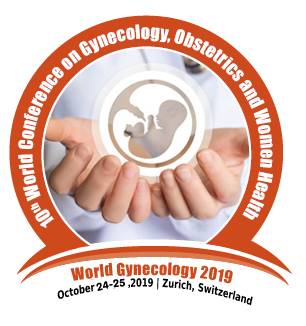
Ioannis G. Papanikolaou
Humanitas University, Italy
Title: First 20 Years of Stem Cells: next generation of Reproductive and Regenerative Medicine
Biography
Biography: Ioannis G. Papanikolaou
Abstract
As the topic of my Keynote Lecture suggests, I will focus on obtained outcomes from the first 20 Years of Stem Cells. It is well consolidated in recent years that research in stem cells and Regenerative Medicine is growing in scope. Translation to the clinic is heralded by the recent initiation of clinical trials with pluripotent derived cells. Unfortunately, stem cell ‘treatments’ till nowadays are currently offered to patients outside of the controlled framework of scientifically sound research and regulated clinical trials. Current evidence suggests that both physicians and patients in reproductive medicine are often unsure about stem cells therapeutic options. Stem cells are the key element for regenerative medicine. Stem cells are undifferentiated cells that often serve as a reservoir of cells to regenerate tissue in settings or injury or cell loss. Today, several studies have proved that the endometrium has progenitor stem cells that can replace all of the endometrium during each menstrual cycle. In addition, multipotent endometrial cells replace these progenitor cells when depleted. Recruitment of stem cells from outside of the uterus occurs in setting of increased demand such as ischemia or injury. Bone marrow-derived multipotent stem cells are recruited to the uterus by estrogen or injury-induced expression of the chemokine CXCL12. In the setting of overwhelming injury, especially in the setting of low estrogen levels, there may be insufficient stem cell recruitment to adequately repair the uterus resulting in conditions such as Asherman syndrome or other endometrial defects. In contrast, excessive recruitment of stem cells underlies endometriosis. Enhanced understanding of stem-cell mobilization, recruitment, and engraftment has created the possibility of improved therapy for endometrial defects and endometriosis through enhanced manipulation of stem-cell trafficking. Further, the normal endometrium is a rich source of multipotent stem cells that can be used for numerous applications in regenerative medicine beyond reproduction. A better understanding of reproductive stem-cell biology may allow improved treatment of endometrial disease such as Asherman syndrome and other endometrial receptivity defects. Inhibiting stem-cell mobilization may also be helpful in endometriosis therapy. In recent years, there is increasing evidence to suggest that endometrial derived multipotent stem cells may play a crucial role in cell therapy for regenerative medicine.

